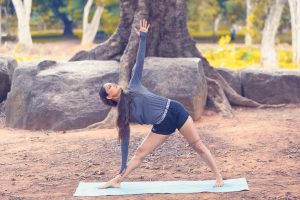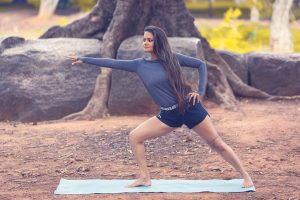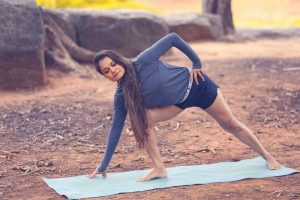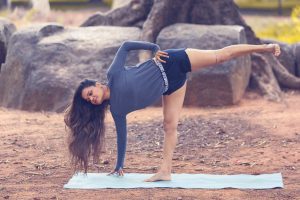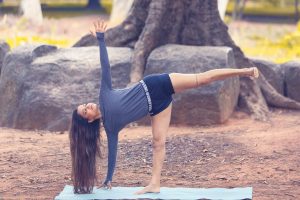At this point I’m no longer wondering what the new normal is. I’m getting used to life as it is at the moment. While I have been stepping out every once in a while to buy vegetables and other essentials, I don’t think I ‘miss’ going out. My cooking and cleaning routines are getting more streamlined and I’m finding a new balance. Having to use my home as an office, a workout arena, a movie theater, a study and the Friday evening hangout zone is now become easier for me.
I’ve also realized that I’m quite enjoying teaching from home. I find that now all my energy goes into teaching my classes and not on battling traffic, or even getting ready. Yes, I have taught many a class in my pajamas. I have more energy for my personal practice, and in the lat few weeks I’ve attended classes with teachers across the world, and this is having a positive impact on my own teaching.
I’ve also started giving my students ‘homework’ and it’s gratifying to teach yoga concepts in depth and have students turn those ideas in their minds later. Maybe practicing online is suiting many students as well! The other day we delved deeper into the Ardha Chandrasana or the Half Moon Posture. Most frequently, students get so focused on finding their balance in the posture that they forget about all the other aspects of the asana, such as an open chest, a long neck, straight spine….
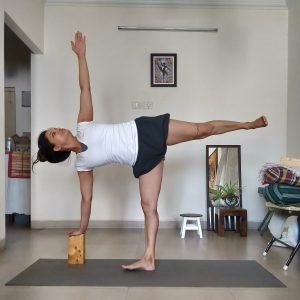
This variation works the best for most practitioners. The hips are open, the spine is parallel to the floor and the arms make one line. The chest is open, neck relaxed and gaze is towards the ceiling. If you find it hard to balance with the gaze on the ceiling then keep your gaze on the floor or in front of you.
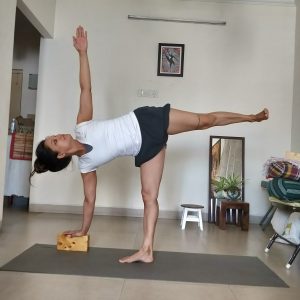
When you are most stable on your legs then reduce the height of the block. When we do this there is a tendency to lose connection with the core, which leads to the raised leg becoming lazy and descending. Keep the raised leg long and push the heel out. Bend from the hip, not from the sides.
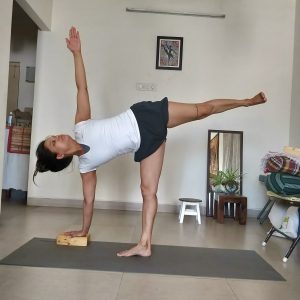
Here I’ve lowered the height even more. At this point the asana had started to become a little more challenging. It took a little effort to keep the raised leg in it’s position and to ensure that my body weight doesn’t lean entirely on my hand.
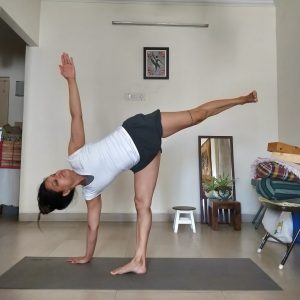
This is the classical Ardha Chandrasana. As you can see, it requires a significant extension of the sides. You should NOT practice this version until you have cultivated enough strength to keep the raised leg lifted and the chest open and strong.
If you’re a beginner….
If you’re a beginner to yoga and have just started your journey, this blog will show you step-by-step instructions about how to get into this posture. You can also watch this video for tips on how to make your posture better:
You can order ‘Beyond Asanas’ here and learn more about the history and mythology of the Ardha chandrasana.
